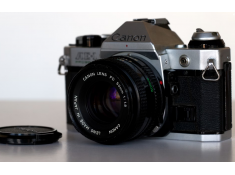Are all disposable cameras the same? Disposable Camera Comparison
Thursday 10 July 2025
 5.2k
5.2k
 Reproduction without the author's authorization is prohibited
Reproduction without the author's authorization is prohibited
The quality of the pictures taken by disposable cameras depends on the photography skills and lab development + scanning. There aren't a lot of differences between disposable cameras; they're all simple plastic cameras with fixed shutter speeds and fixed apertures; the main difference is the film inside them.
Disposable Camera Comparison
The Kodak FunSaver
The Kodak FunSaver comes loaded with Kodak’s custom ISO 800 color negative film designed specifically for disposable cameras. Although not sold separately, it’s similar to the discontinued Kodak Gold 800 film, known for its warm tones, high saturation, and wide exposure latitude. The lens has a focal length around 32mm, an aperture of about f/10, and a shutter speed near 1/100 second. It features a manually activated flash, making it suitable for low-light indoor or nighttime shooting. Its high ISO and stable exposure settings make it one of the most balanced, all-around disposable cameras—great for travel, portraits, and parties.

The Fujifilm QuickSnap
The Fujifilm QuickSnap Flash 400 uses Fujifilm’s Superia X-TRA 400 film, which has an ISO of 400. This film delivers fine grain and cooler, more natural colors, making it ideal for daytime outdoor shots. The lens aperture is around f/10, with a slightly faster shutter speed of about 1/140 second to help reduce blur from camera shake. It has a manually triggered flash, which is needed in low light. This camera is well suited for street photography and landscapes.

The Ilford Sprite 35-II
The Ilford Sprite 35-II disposable camera uses Ilford’s HP5 Plus ISO 400 black-and-white film, known for its rich tonal range and strong contrast. The aperture is about f/9, shutter speed near 1 / 120s second, and it also includes a flash. The grain is moderate, and it’s favored for street and artistic black-and-white photography.

Kodak Sport Waterproof camera
Kodak’s Sport Waterproof camera is designed for underwater use, with a waterproof rating of up to 15 meters (about 50 feet). It uses Kodak ISO 800 color film similar to the FunSaver’s. While exact aperture and shutter speeds aren’t officially specified, they are estimated to be close to the FunSaver’s settings. It lacks a flash, so it’s best used in bright outdoor or underwater conditions like beaches and pools.

Lomography Simple Use Film Camera
Lomography’s Simple Use Film Camera series offers multiple film options. The color version uses Lomography’s Color Negative 400 film, which produces a vintage look with heavier grain and a yellowish tint. Its aperture is around f/9, shutter speed about 1/120 second, and it includes a built-in flash with colored filters for creative effects. The black-and-white version uses Lomography B&W 400 film, featuring coarser grain and strong contrast, favored for atmospheric and stylized shots.
The Kodak H35 Half Frame camera
The Kodak H35 Half Frame camera is a bit different from the typical disposable. It is a reusable 35mm half-frame camera, effectively doubling the number of shots per roll (36 exposures become 72 images). It has a 30mm lens with an aperture of approximately f/9 and a shutter speed around 1/100 second. It generally lacks a built-in flash. Because it uses standard 35mm film and offers manual film loading, it’s a more cost-effective and environmentally friendly option for those who want a lightweight, simple camera with a disposable-like feel but longer-term use.
What Is a Disposable Film Camera
A disposable film camera is a simple, single-use camera preloaded with a roll of 35mm film. It’s designed for point-and-shoot convenience without any need for technical knowledge. Once all exposures are taken, the entire camera is dropped off at a lab for film developing and scanning. Compared to digital cameras, it offers a nostalgic, hands-off shooting experience with no previews and no do-overs.
Common Features
Most disposable cameras use a fixed-focus lens, typically wide-angle, that captures sharp images from a few feet to infinity. Framing is done through a basic optical viewfinder. Film is advanced manually with a thumb wheel. These cameras usually hold 24 or 27 exposures and are housed in a lightweight plastic shell. Most models lack autofocus or auto exposure; they rely on preset settings designed for general-purpose use.
Key Differences Between Types
Color vs Black and White Film
Color film is the most popular option, delivering warm, forgiving images suitable for everyday use. Black and white film offers a moodier, high-contrast look and is often chosen for its artistic feel or vintage aesthetic.
With Flash vs Without Flash
Models with a built-in flash are more versatile, allowing you to shoot indoors or at night. No-flash versions are more minimal and are best suited for bright outdoor conditions.
Waterproof vs Standard Versions
Waterproof disposable cameras are sealed in a protective casing and can be used in shallow water, on the beach, or in rainy weather. They typically don’t include a flash and perform best in daylight.
Film ISO Speed
Most disposable cameras use ISO 400 film, which is versatile for a mix of lighting conditions. Some models come with ISO 800 film for better performance in low light, especially when paired with flash. ISO 100 versions are less common and generally require bright, sunny conditions. ISO speed affects grain and exposure flexibility—higher ISO offers better low-light usability but introduces more grain.
Price Range
Standard color disposable cameras with flash usually range from $12 to $18. Black and white or waterproof models can cost slightly more, typically between $15 and $25. These prices do not include developing and scanning, which usually adds another $12 to $20 per roll, depending on the lab and output quality.
When to Use a Disposable Camera
Disposable cameras are ideal for travel, especially when you don’t want to risk damaging or losing expensive gear. They’re also great at weddings or parties, where guests can casually snap candid moments. Waterproof versions work well for vacations, snorkeling, or rainy hikes. Students and first-time film users appreciate the simplicity, while film enthusiasts sometimes use them for raw, spontaneous street photography.
Lab development and scanning affect single-use camera image quality
Lab development and scanning play a critical role in the final image quality of disposable film cameras—sometimes more so than the camera itself. While the optics and exposure settings of a disposable camera set the foundation, it’s in the lab where the latent image becomes a visible photo. Here’s how each step influences the result:
Film Development Affects Color, Contrast, and Grain
The chemical development process—commonly C-41 for color negative film and standard black-and-white chemistry for monochrome—affects the final color balance, contrast, and even the perceived grain of your images. If the lab uses fresh chemicals and maintains proper temperature and timing, your film will have rich color, clean highlights, and consistent tonal range. Poor chemistry or imprecise timing can result in flat colors, muddy shadows, and unpredictable contrast, which can ruin otherwise well-exposed shots.
For black-and-white film, the developer choice (e.g. D-76 vs. Rodinal) and timing can either soften or emphasize grain and contrast, drastically changing the photo’s mood.

Scanning Determines Sharpness, Resolution, and Color Fidelity
After development, the film is scanned to create digital files. The quality of this scan is crucial: a low-end scanner may add digital noise, reduce sharpness, or misinterpret color, while a high-end Noritsu or hasselblad scanner can preserve detail, deliver smoother grain, and reproduce color closer to how the film stock is intended to look.
Scanning also introduces color profiles. Different labs have different preferences—some push warmer tones, others cooler or more muted. Labs may also adjust brightness, contrast, and even sharpness during the scan. For disposable cameras with fixed exposure settings, this post-scan editing can either rescue or degrade your final images.
Resolution Choices Impact Image Usability
Labs often offer “low,” “medium,” or “high” scan options. Low-resolution scans (e.g., 2–4 MP) are fine for social media, but prints will look soft and digital artifacts may appear. High-resolution scans (12–20+ MP) retain more detail and allow for cropping or printing at large sizes. Since disposable cameras aren’t extremely sharp to begin with, a good scan helps maximize what little optical resolution is available.
Consistency and Style Depend on the Lab
Each lab has a different aesthetic approach. Some labs scan with a neutral, “flat” look for post-processing flexibility. Others add contrast and saturation for a ready-to-share image. If you send the same roll to two different labs, you might get images that look entirely different. This is why film users often develop loyalty to labs that match their desired style.
conclusion
Disposable cameras are also an important way to get started with analog photography. If you have finished shooting with a disposable camera and feel great about it, you can also try buying a film camera. I recommend 10 easy-to-use P&S cameras in 10 Best Point and Shoot Film Cameras In 2025.
Statement: all contents and remarks made by K&F CONCEPT 's intranet friends only represent themselves and do not reflect any K&F CONCEPT 's opinions and views.
-
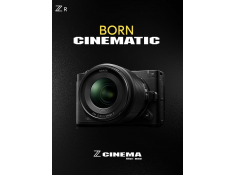 Nikon ZR Cameras to Receive Multiple Firmware Updates Next YearMonday 29 December 2025
Nikon ZR Cameras to Receive Multiple Firmware Updates Next YearMonday 29 December 2025 -
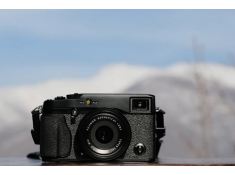 Fujifilm 2026 Camera Rumors: Which New Cameras Are Coming?Friday 26 December 2025
Fujifilm 2026 Camera Rumors: Which New Cameras Are Coming?Friday 26 December 2025 -
 Photographer’s Most Desired New Year Gifts: What Actually Makes SenseWednesday 24 December 2025
Photographer’s Most Desired New Year Gifts: What Actually Makes SenseWednesday 24 December 2025 -
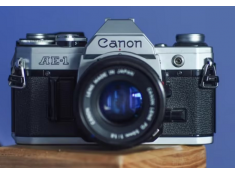 Canon Camera Rumors for 2026: Which Cameras Will Be Released?Tuesday 23 December 2025
Canon Camera Rumors for 2026: Which Cameras Will Be Released?Tuesday 23 December 2025 -
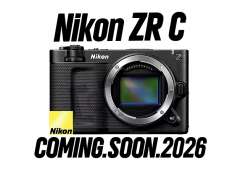 Nikon ZRC is to be released in the fourth quarter of 2026Tuesday 23 December 2025
Nikon ZRC is to be released in the fourth quarter of 2026Tuesday 23 December 2025






